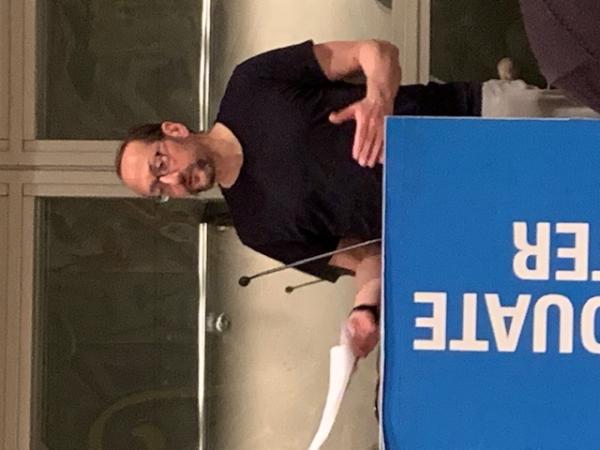
Research by CCNY's Keith Gandal and his brother suggests that socio-economic factors are a major reason COVID-19 mortality rates in New York City are much higher than Mumbai in India.
Why would New York City, with its excellent, state-of-the-art hospitals, have a death rate from COVID-19 that is significantly higher than that of Mumbai, with its extremely overcrowded slums that house more than half of its citizens?
New research, from Keith Gandal, professor of English in the Division of Humanities and the Arts at The City College of New York, and his brother Neil Gandal, professor of economics at Tel Aviv University, examine the surprising fact that the New York City death rates from COVID-19 have been four times that of Mumbai, India.
According to their research, the difference is not due, as some have speculated, to Mumbai undercounting its COVID-19 fatalities, an especially weak strain of the virus that is only in Southeast Asia, or some unique genetic factors among Indian slum dwellers. Instead, they suggest that socio-economic factors have played a strong role.
In New York City, becoming ill with COVID-19 was a crisis. It meant a radical shift in behavior, involving quarantine and a dramatic adjustment of family and often work life. In the Mumbai slums, where whole families live in one small room, social distancing was impossible, and the lockdown threatened residents with starvation. They couldn’t worry too much about getting or being sick, as they couldn’t stop trying to work or search for food assistance.
The stresses in each city were different. In New York City—but not the Mumbai slums—many sick people understandably experienced what might be called “illness panic.”
Doctors know that many COVID-related deaths are due to immune-system overreaction, including “cytokine storms,” but they don’t know what causes such overreaction. There is meanwhile a rich medical literature linking stress to immunological dysfunction.
These two bodies of medical knowledge have not yet been linked, but adverse psychoneuroimmunological reactions—or interactions between psychological processes and the nervous and immune systems of the human body—may explain many COVID-related deaths.
About the City College of New York
Since 1847, The City College of New York has provided a high-quality and affordable education to generations of New Yorkers in a wide variety of disciplines. CCNY embraces its position at the forefront of social change. It is ranked #1 by the Harvard-based Opportunity Insights out of 369 selective public colleges in the United States on the overall mobility index. This measure reflects both access and outcomes, representing the likelihood that a student at CCNY can move up two or more income quintiles. In addition, the Center for World University Rankings places CCNY in the top 1.8% of universities worldwide in terms of academic excellence. Labor analytics firm Emsi puts at $1.9 billion CCNY’s annual economic impact on the regional economy (5 boroughs and 5 adjacent counties) and quantifies the “for dollar” return on investment to students, taxpayers and society. At City College, more than 16,000 students pursue undergraduate and graduate degrees in eight schools and divisions, driven by significant funded research, creativity and scholarship. CCNY is as diverse, dynamic and visionary as New York City itself. View CCNY Media Kit.